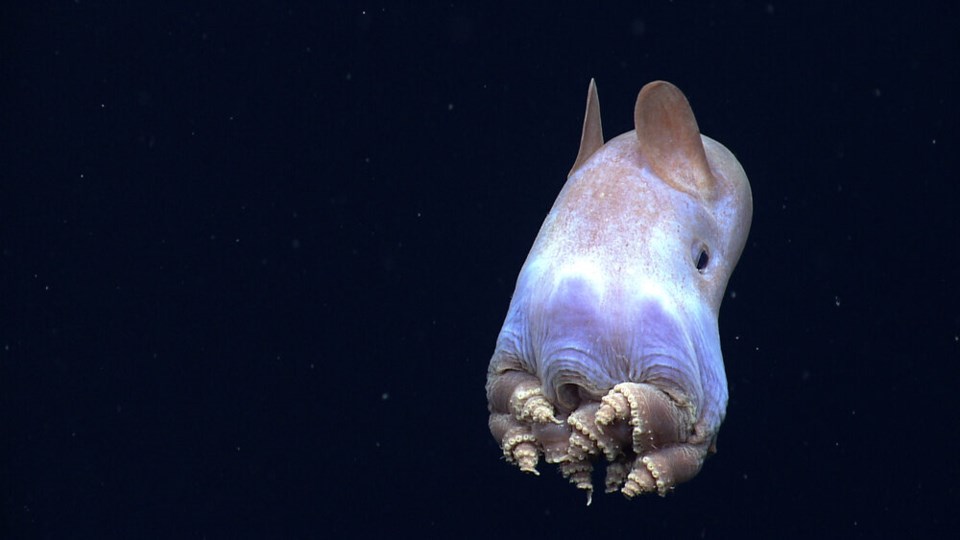A B.C.-based company is looking to unleash a new era of resource extraction, raising questions over how to protect the planet's deep-sea ecosystems we know the least about.
By Stefan Labbé, North Shore News 
Found in waters as deep as 7,000 metres, a Dumbo octopus uses its ear-like fins to swim away. The species is part of a tapestry of deep-sea ecosystems little known to science and that could be put at risk if mining goes ahead. National Oceanic and Atmospheric Administration
In 1983, Verena Tunnicliffe was floating about 250 kilometres off the coast of Vancouver Island when a call came over the radio — geologists on a nearby sister ship had dredged up something strange from the sea floor.
“We got all these strange smelly worms,” Tunnicliffe remembers them saying. “Would you like them?”
The deep-sea researcher was the only one with a submarine, and a year later, her exploration team had raised enough money to go back.
When Tunnicliffe finally descended over 2,000 metres to a patch of ocean floor, everything was dark, save for the light on the submersible.
Below them, two tectonic plates diverged, allowing cold sea water to seep through the Earth’s crust. Super-heated by molten lava, the water shoots back into the ocean as a 400-degree-Celsius hot soup of nutrients and chemicals.
The crew crept along the bottom in an exercise Tunnicliffe describes as “trying to explore the Rocky Mountains with a flashlight.”
First came white mats of bacteria. Then, out of the darkness, huge mounds of “gorgeous” white tube worms emerged, the metre-and-a-half-long creatures topped with red plumes. Inside, the scientist would later learn they had no guts, but a body filled with vent-fed bacteria that feed the worms.
And in a potential window onto the origin of life on a hot, young Earth, a bacteria found at the B.C. vents was later discovered to survive temperatures of 121 C — the hottest upper limit for life.
“Just covered, dripping with animals,” Tunnicliffe said, pointing to at least 12 distinct species found there and not seen anywhere else on Earth.
A year later, Tunnicliffe would find vents at an enormous scale, hydrothermal openings that form chimneys up to 45 metres tall known as “black smokers.”
.....
Half a century ago, when the ISA was in its infancy, the oceans’ abyssal plains were considered to be a “wasteland” of barren ecosystem where life barely existed, said Catherine Coumans, deep-sea mining campaigner at the NGO watchdog MiningWatch.
“We now know that nothing could be further from the truth,” she said.
A study published in 2020 suggested the only reason the nodules remain on the seafloor surface — and therefore continue to grow — is because of a “symbiosis” where star fish, sea cucumbers, mollusks and the elephant-eyed (dumbo) octopus forage in their nooks and crannies. Another study looking at sea creatures living on the abyssal plains found their density more than doubled in fields of dense nodules.
“These nodules are a habitat,” said Coumans. “They have fauna on them that are linked to the rest of the ecosystem up the water column to the surface. There’s really nothing like it on Earth.”
...
Read the full article here.